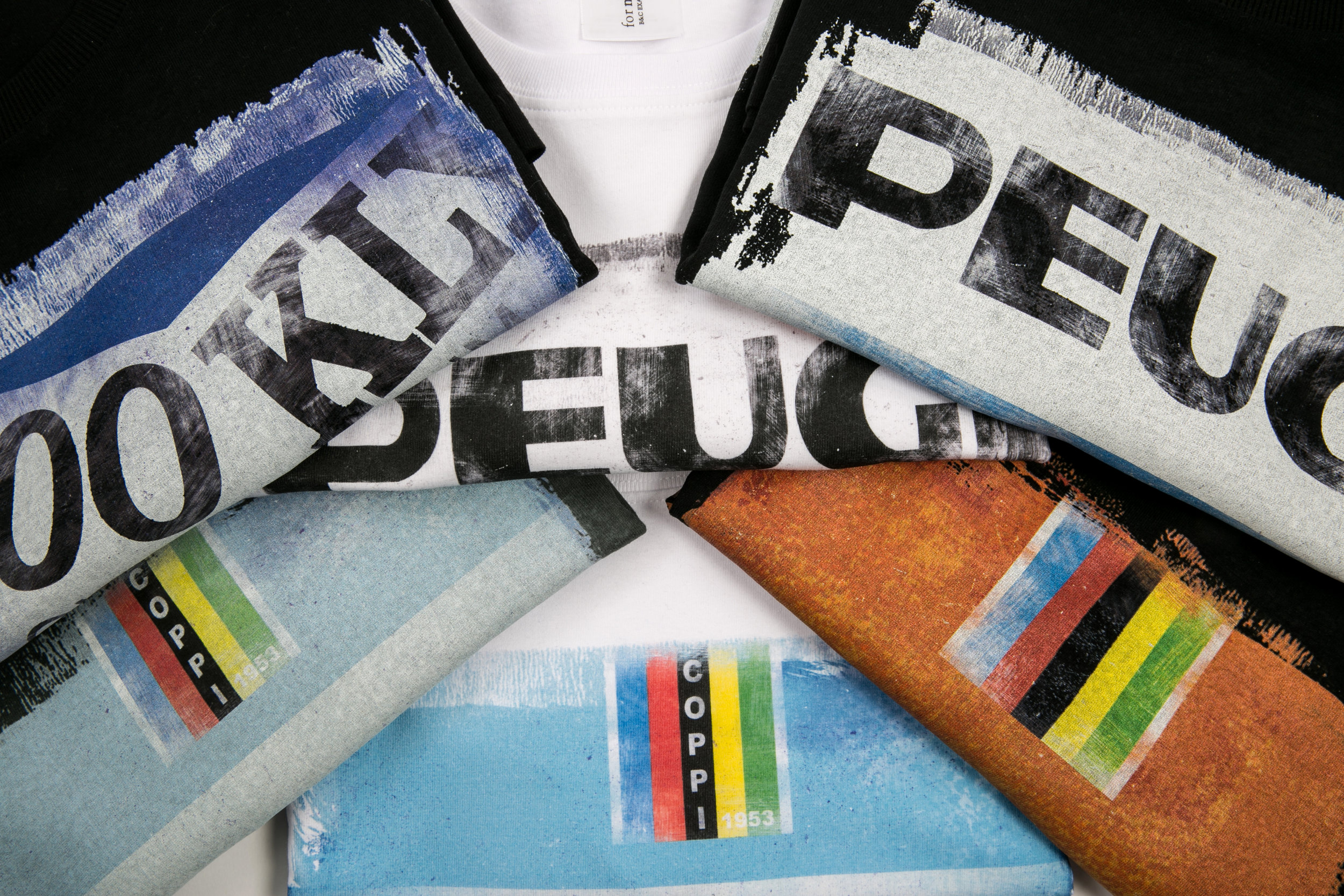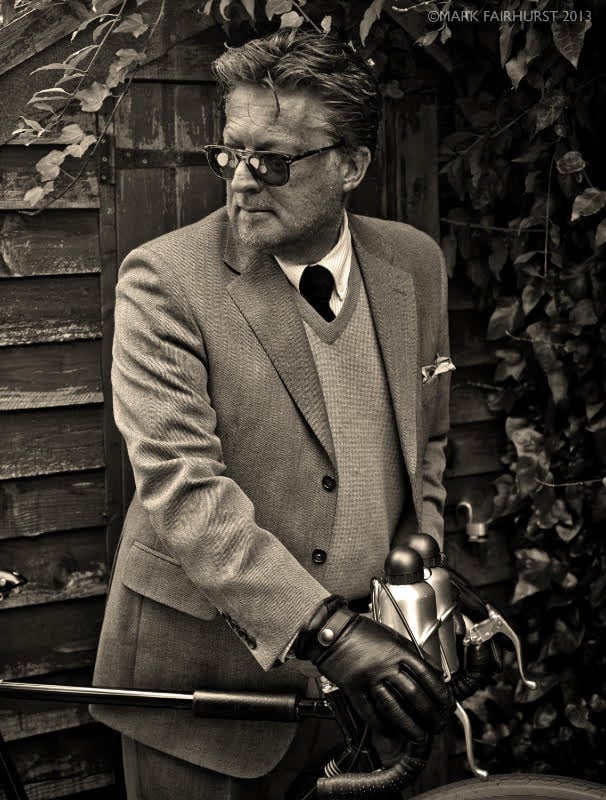Cycling has always inspired artists and photographers to produce some of the most striking images: the noble heroism of the rider, the stunning landscape of the Tour and the Giro, not to mention the sheer elegance of the bicycle itself. No one has captured the essence of the romance of cycling in recent years better than illustrator Mark Fairhurst, so we asked him about his inspiration and how he has become one of the most sought after cycling artists of today.
We first came across Mark’s work from his regular posts on Twitter which have always stood out for their originality, humour and celebration of the heroism of the sport. His style has a retro feel, reminiscent of those mid century posters for the Tour and the Olympics. The illustrations are clean, striking and simple but packed full of wit, revealing a passion for The Bike and cycling as a sport only matched by Jered and Ashley Gruber’s photography.
Some of my favourites (featured in his 2015 book P is for Peloton) are the portraits of famous riders like Pantani, his egg- shaped head seen from the back, a white triangle in front of him depicting both the narrowing road and a mountain. Meanwhile his posters for Milan - San Remo and Paris - Roubaix hark back to an age of true grit and determination. He’s able to depict those romantic brands that we all love in true iconic fashion like his Bianchi illustration for instance. But he’s also able to portray the modern pro peloton in a romantic way too – his picture of Chris Froome winning the Mont Ventoux stage of the Tour in 2013 is magnificent, as is his depiction of Wiggins on his time trial bike.
Mark Fairhurst - illustrator of P is for Peloton
Mark first came to prominence during the 2012 Olympics. Bradley Wiggins had just won the Tour (“A day I will never forget!”) and he made a basic cartoon of him which he posted on Twitter. “People started asking for t-shirts and posters with the image on. Good stuff. Then it was London 2012. I started producing deco style images of all the sporting disciplines in the games…the response was incredible! During the opening ceremony tweets were flying around like shooting stars. More and more people were asking for the images as posters.” As a result he was given a full spread on London’s Metro News and offered a show space at the Trafalgar Hotel. He donated all the proceeds of the exhibiton, several thousands of pounds, to the Bobby Moore Cancer Fund.
But Mark’s real passion is cycling, and much of his work is devoted to recreating images from that world. “I’m just a keen cyclist! I love the freedom, the camaraderie, the ability to propel oneself and benefit your body and the environment. Much like my work I like the older aspect of the cycling world: I ride old steel bikes…My oldest is a Sunbeam from 1929. Other bikes in the stable date from 1947, 1968, 1979, 1999 and 2008.” His heroes from the past include Bartali, Coppi, Anquetil and Tom Simpson.
Mark Fairhurst's favourite Pashley which he rides with the Guv'nor's Assembly
He is a devoted fan and member of The Guv’nor’s Assembly, “a wonderful bunch of loons that favour the halcyon days of gentlemanly cycling. Tweed, merino wool, leather. Not a micron of lycra to be seen!” and takes part the in the UK version of L’Eroica each year at Bakewell with his fellow club mates on their steel framed Pashleys whose motto is “We never leave a man behind.” This year they’ll be taking part in The Mighty Corinthian, a 300km ride in the Lake District. “Like the cyclists of old, to do some of the rides we do on bikes that weigh a ton is quite an achievement…We may look over the hill but we can still rock when it’s required…To be quite honest, many of them do sportives and get laughed at at the start. By the time they roll over the finish line, the applause is overwhelming.”
Chapeau!
So much of Mark’s inspiration comes from that golden age of cycling. He says that his father had always told him that he’d been born 20 or 30 years too late, so great is the love he has for older things. “Things seemed so much more of a challenge in the earlier days of the sport: machinery, clothing, nutrition…I like to think that’s what some of the imagery shows.” To help him he has a reference library of cycling imagery from the early 1900s onwards. “The looks of pain, dirt and sheer bloody determination on the riders’ faces are incredible…Bloody heroes, all of ‘em!”
Mark Fairhurst - a portrait of the artist
Originally Mark was a photograher for an advertising agency in London, something he rather fell into by chance. A family friend who was a Fleet Street photographer noticed that he had a natural gift for imagery when he put a Pentax Spotomatic in his hands and told him “to have some fun.” He got a job in the photo lab of the agency and was summoned to help on a shoot when the photographer’s assistant fell ill. “I never left the studio. Four years later I ended up being the principle photographer. Large format cameras, 10x8. A wonderful era in the industry.” When he went freelance he found he had a good aptitude for self promotion and creating ideas. “By a weird quirk, I ended up working for Bobby Moore for his sports promo company… A great and kind man. The irony was I can’t stand football!”
His background as a photographer still informs his work and he claims that, “I’m a nightmare with real paint…the results would be disastrous.” He starts with rough sketches which he finishes off on a computer under the stairs of his home in Gloucestershire (the Harry Potter of the art world perhaps?) What are remarkable are the textured layers he is able to create in his artwork using this method. He is also incredibly prolific: “I’ll be up at all hours thrashing out ideas and images solely due to something I may have heard or seen the day before. I must be a nightmare to live with!”
Despite Mark’s love for a bygone age, his love affair with cycling carries on up to the modern era. Although the “big budget teams overshadow the little guys” he is still an avid fan. Chris Froome asked him to illustrate part of his book, The Climb, and he owns what he calls a “modern plastic bike: a Reef EPX Racing from Australia which was made at the turn of this century.” When not producing fabulous works of art, he spins around the lanes near his home in the Cotswolds and has even ventured into the Forest of Dean for some off road stuff with a friend who lends him disc braked mountain bike. “Some great climbs, but being built like a gorilla, climbing is always a struggle for me, but you just dig deeper!”
What’s so striking about his work is that it captures the very essence of cycling as a leisure pastime and as professional sport. He harks back to the romantic visions we have of the past but still celebrates the “big, brash, expensive” side of the modern scene. “What other sport can boast inspiring so many people of all ages to get on their bikes and ride?” Ultimately, “I produce what I do because of the passion I seem to have for such a simple, effective mode of transport.”
We look forward to seeing much more of Mark Fairhurst in the future. He’s a little cagey about what’s to come in 2016; “Something very special planned for this year: WATCH THIS SPACE!” We certainly will.
See more of Mark's work or buy his prints at Zeitgeist Images

















































